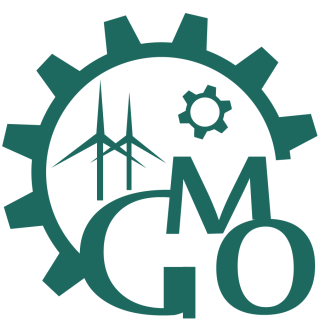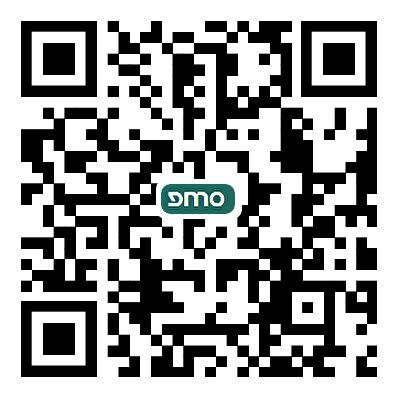REFERENCES
1. Zhuang C, Liu J, Zhang L. Connotation, architecture and enabling technology of Industrial 5.0. J Mech Eng 2022;58:75-87.
2. Cillo V, Gregori GL, Daniele LM, Caputo F, Bitbol-Saba N. Rethinking companies’ culture through knowledge management lens during Industry 5.0 transition. J Knowl Manag 2022;26:2485-98.
3. Alves J, Lima TM, Gaspar PD. Is Industry 5.0 a human-centred approach? A systematic review. Processes 2023;11:193.
4. Asif M, Searcy C, Castka P. ESG and Industry 5.0: the role of technologies in enhancing ESG disclosure. Technol Forecast Soc Change 2023;195:122806.
5. Haleem A, Javaid M, Singh RP, Suman R, Qadri MA. A pervasive study on Green Manufacturing towards attaining sustainability. Green Technol Sustain 2023;1:100018.
6. Maddikunta PKR, Pham Q, Prabadevi B, et al. Industry 5.0: A survey on enabling technologies and potential applications. J Ind Inf Integr 2022;26:100257.
7. Xu X, Lu Y, Vogel-heuser B, Wang L. Industry 4.0 and Industry 5.0 - inception, conception and perception. J Manuf Syst 2021;61:530-5.
8. Ivanov D. The Industry 5.0 framework: viability-based integration of the resilience, sustainability, and human-centricity perspectives. Int J Prod Res 2023;61:1683-95.
9. Demir KA, Döven G, Sezen B. Industry 5.0 and Human-Robot Co-working. Procedia Computer Science 2019;158:688-95.
10. Liu Z, Wang H, Wei H, Liu M, Liu Y. Prediction, planning, and coordination of thousand-warehousing-robot networks with motion and communication uncertainties. IEEE Trans Automat Sci Eng 2021;18:1705-17.
11. Lou S, Hu Z, Zhang Y, Feng Y, Zhou M, Lv C. Human-cyber-physical system for Industry 5.0: a review from a human-centric perspective. IEEE Trans Automat Sci Eng 2024:1-18.
13. Hess T, Matt C, Benlian A, Wiesböck F. Options for formulating a digital transformation strategy. Mis Q Exec 2016;15:123-39. Available from: https://openurl.ebsco.com/EPDB%3Agcd%3A8%3A8694584/detailv2?sid=ebsco%3Aplink%3Ascholar&id=ebsco%3Agcd%3A115879199&crl=c. [Last accessed on 29 Apr 2024].
14. Warner KS, Wäger M. Building dynamic capabilities for digital transformation: an ongoing process of strategic renewal. Long Range Plann 2019;52:326-49.
15. Loebbecke C, Picot A. Reflections on societal and business model transformation arising from digitization and big data analytics: a research agenda. J Strategic Inf Syst 2015;24:149-57.
16. Gastaldi L, Appio FP, Corso M, Pistorio A. Managing the exploration-exploitation paradox in healthcare: three complementary paths to leverage on the digital transformation. Bus Process Manag J 2018;24:1200-34.
17. Svahn F, Mathiassen L, Lindgren R, Kane GC. Mastering the digital innovation challenge. MIT Sloan Manag Rev 2017;58:14-6. Available from: https://sloanreview.mit.edu/article/mastering. [Last accessed on 29 Apr 2024]
18. Sun X, Zhang Q. How can dynamic capabilities make sense in avoiding value co-creation traps? Manag Decis 2022;60:735-57.
19. Yoo Y, Boland RJ, Lyytinen K, Majchrzak A. Organizing for innovation in the digitized world. Organ Sci 2012;23:1398-408.
20. Nambisan S, Wright M, Feldman M. The digital transformation of innovation and entrepreneurship: progress, challenges and key themes. Res Policy 2019;48:103773.
21. Nambisan S. Digital entrepreneurship: toward a digital technology perspective of entrepreneurship. Entrep Theory Pract 2017;41:1029-55.
22. Nambisan S, Zahra SA, Luo Y. Global platforms and ecosystems: Implications for international business theories. J Int Bus Stud 2019;50:1464-86.
23. Ojala A, Evers N, Rialp A. Extending the international new venture phenomenon to digital platform providers: a longitudinal case study. J World Bus 2018;53:725-39.
24. Coreynen W, Matthyssens P, Van Bockhaven W. Boosting servitization through digitization: pathways and dynamic resource configurations for manufacturers. Ind Mark Manag 2017;60:42-53.
25. Vendrell-herrero F, Bustinza OF, Parry G, Georgantzis N. Servitization, digitization and supply chain interdependency. Ind Mark Manag 2017;60:69-81.
26. Kamalaldin A, Linde L, Sjödin D, Parida V. Transforming provider-customer relationships in digital servitization: a relational view on digitalization. Ind Mark Manag 2020;89:306-25.
27. Kohtamäki M, Parida V, Patel PC, Gebauer H. The relationship between digitalization and servitization: the role of servitization in capturing the financial potential of digitalization. Technol Forecast Soc Change 2020;151:119804.
28. Paiola M, Gebauer H. Internet of things technologies, digital servitization and business model innovation in BtoB manufacturing firms. Ind Mark Manag 2020;89:245-64.
29. Chen Y, Visnjic I, Parida V, Zhang Z. On the road to digital servitization - the (dis)continuous interplay between business model and digital technology. Int J Oper Prod Manag 2021;41:694-722.
31. Al-debei MM, Avison D. Developing a unified framework of the business model concept. Eur J Inf Syst 2010;19:359-76.
32. Zott C, Amit R, Massa L. The business model: recent developments and future research. J Manag 2011;37:1019-42.
33. Baden-fuller C, Haefliger S. Business models and technological innovation. Long Range Plann 2013;46:419-26.
34. Schneider P. Managerial challenges of Industry 4.0: an empirically backed research agenda for a nascent field. Rev Manag Sci 2018;12:803-48.
35. Foss NJ, Saebi T. Fifteen years of research on business model innovation: how far have we come, and where should we go? J Manag 2017;43:200-27.
36. Kohtamäki M, Parida V, Oghazi P, Gebauer H, Baines T. Digital servitization business models in ecosystems: a theory of the firm. J Bus Res 2019;104:380-92.
37. Hanafizadeh P, Mehrabioun M, Badie K, Soofi JB. A systemic framework for business model design and development -Part A: theorizing perspective. Syst Pract Action Res 2018;31:437-61.
38. Rayna T, Striukova L. From rapid prototyping to home fabrication: how 3D printing is changing business model innovation. Technol Forecast Soc Change 2016;102:214-24.
39. Sjödin D, Parida V, Palmié M, Wincent J. How AI capabilities enable business model innovation: scaling AI through co-evolutionary processes and feedback loops. J Bus Res 2021;134:574-87.





